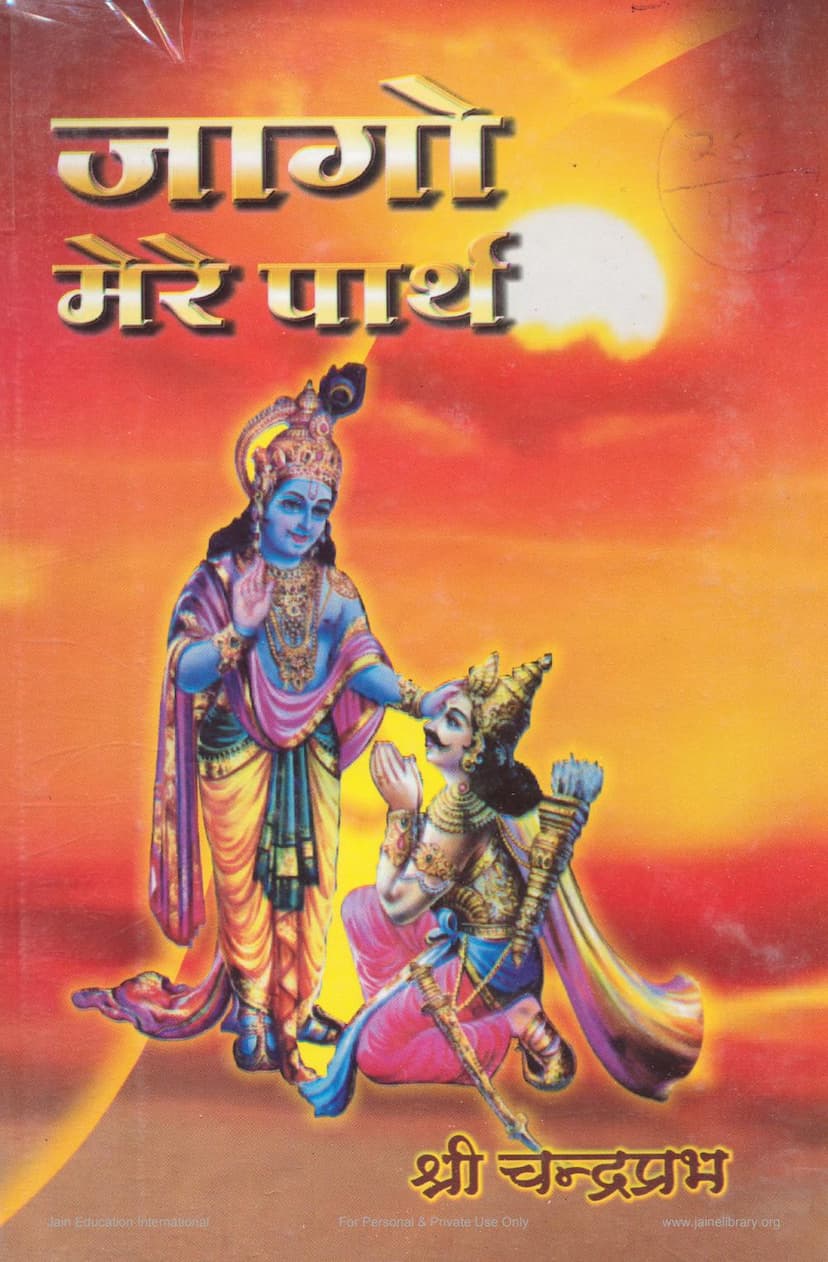Jago Mere Parth
Added to library: September 1, 2025

Summary
"Jago Mere Partha" by Shri Chandraprabh Sagar, published by Jityasha Foundation, is a collection of eighteen discourses on the Bhagavad Gita delivered in Jodhpur. The book interprets Krishna's teachings from the Gita as a timely and relevant message for humanity.
The central theme of the book is an awakening, an invocation by Lord Krishna and Shri Chandraprabh himself. The author emphasizes that the Gita, a profound contribution from Krishna to humanity, is presented by Shri Chandraprabh as a timeless philosophy, devoid of sectarianism. Each chapter of the Gita is viewed as a call to the dormant "Arjuna" within every individual, rousing the dormant spirit and drive to overcome life's challenges. The essence of the Gita's message, according to the book, lies in action (karmayoga) and detachment from the fruits of action.
Shri Chandraprabh's discourses are described as heartfelt and insightful, reflecting a deep assimilation of the Gita's wisdom. The author is lauded for making the complex mysteries of the Gita accessible to a wide audience, thus bridging the gap between ancient wisdom and modern life. The book is presented as a blend of the real and the ideal, connecting Krishna's philosophy with that of Lord Mahavir and Buddha, and the devotional fervor of poets like Sur and Mira.
The book argues that the Gita provides guidance for householders and ascetics alike. It encourages readers to engage with scriptures like the Gita not based on religious dogma but on their inherent truth, leading to a transformation of the mind and a new direction in life. The ultimate goal is to become the conqueror of one's inner self and to strive for excellence through diligent effort.
The introductory sections highlight the Bhagavad Gita as a key to understanding various Indian philosophical traditions, encompassing the truths found in Buddhist texts, Jain principles, Vedic philosophy, and Upanishads. The book emphasizes that true understanding comes from embracing the core essence ("guda") of these teachings rather than getting caught up in their external forms ("chilke").
The book positions the Gita's relevance in addressing the internal "Mahabharata" that each individual faces. It identifies inner demons like Ravana, Duryodhana, Kansa, and Shakuni within each person, representing desires, ego, and manipulative tendencies. The Gita, therefore, teaches one to fight these internal battles, promoting self-conquest. The author stresses the importance of embracing the spirit of a warrior ("kshatriyatva") not for external conflict but for inner victory and winning the hearts of others.
The text encourages readers to recognize their inner potential and to strive for self-mastery, drawing parallels with historical figures who embodied strength and righteousness. It advocates for a life of action, detachment, and unwavering commitment to one's principles, ultimately leading to spiritual liberation and self-realization. The book's message is one of awakening, self-discovery, and the pursuit of a meaningful, purposeful life.